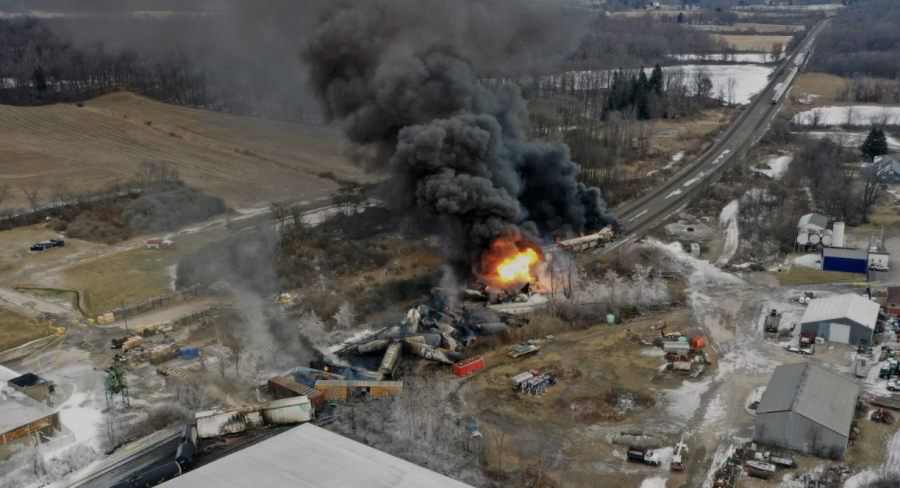Looking Into The Train Derailment in East Palestine
April 6, 2023
On Friday, February 3rd, 2023, a train transporting mass amounts of hazardous chemicals, derailed in East Palestine Ohio. The train, made up of 150 cars and operated by Norfolk Southern, was bound for Conway, Pennsylvania when a mechanical issue caused it to derail on its way from Madison, Illinois.
The derailment caused a massive spill of hazardous chemicals, which quickly spread across the surrounding areas as a smoke cloud engulfed the city. The train was carrying a variety of chemicals including vinyl chloride, butyl acrylate, Ethylhexyl acrylate, and ethylene glycol monobutyl ethers which were dispersed into the air, soil, and water.
Vinyl chloride, a flammable and dangerous substance, exposure to which can cause a range of health problems including cancer, has concerned officials the most.
Shortly after the derailment, emergency crews were dispatched to the scene, and the area was cordoned off and evacuated. The first responders worked tirelessly to contain the spill, which has raised significant concern and public outrage from across the nation about potentially long-term and dangerous health effects that now span beyond the initial disaster site.
This incident has been highly publicized and raised nationwide concerns about the safety of transporting hazardous materials by rail, the need for stricter regulations and safety protocols, and the need to invest in better infrastructure. Unfortunately, this is not an isolated incident, as there are three train derailments every day in the US. And in the weeks following the derailment, the US averaged one chemical accident every two days.
The train derailment has become a heavily politicized event as concerns about the government’s efforts and truthfulness have been raised. In fact, it was practically a race to see which political figures would get to the disaster site first. Government agencies and offices have received heavy backlash from people claiming they haven’t done enough or been thorough enough with their investigations.
Although environmental organizations have found no contamination, many are hesitant to trust this result. Public trust has been severely strained as concerns about water, land, and air contamination persist. Over 40,000 fish have been killed and now lie in water sources feeding these fears.
The cleanup and testing of the site continue, as the costs rise. In fact, the State of Ohio is suing Norfolk Southern for financial damages. While no toxic chemicals have been found to contaminate the groundwater or air, the investigation remains ongoing.
The true legacy and aftermath of the derailment remain to be seen as relationships have been strained and possible contamination remains threatening.

